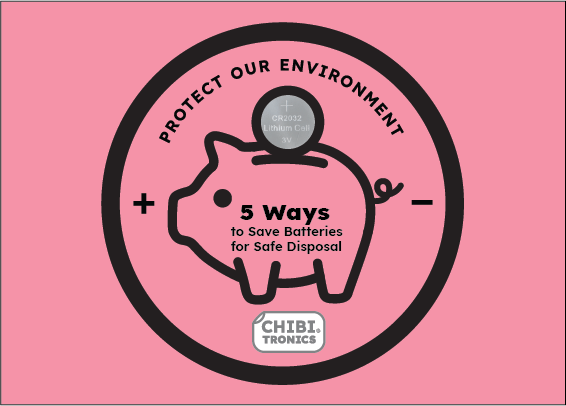
Did you know that the coin cell/button cell batteries most widely used in light-up paper crafts and cards (CR2032 and CR2016) fit into a category of batteries that require unique consideration for proper disposal?
Primary/Single-Use batteries cannot be recharged and must be disposed of once they wear out. Alkaline, lithium, silver oxide, zinc-air, zinc-carbon, and zinc-chloride, commonly known as AA, AAA, 9V, D-cell, and button cell are all types of primary batteries.
Battery Recycling Guide by Call2Recycle
But, how does one dispose of these single-use batteries properly? And why should you care?
In case you didn’t already know, exhausted, single-use batteries often contain heavy metals that can leach into the water supply if they are not disposed of properly. If they end up in a landfill, or are incinerated with other household trash, these contaminants may also be released into the air we breathe. This is why we each have an important role to play, one that should hopefully work to inform our collective actions.
We’ve all been there. Perhaps, you’ve made or received an amazing light-up card, but after some time, you are left with a dead battery and a decision.
Your first impulse may be to toss it into the trash (or a recycling bin), because it is small and you can stop thinking about it once it’s out of sight. You might casually think, “What difference will tossing a battery or two into the trash actually make?”
Or perhaps you’ve been part of a group, crafting with light in a classroom, art studio, small business, or trade show, and the participants start asking what they should do with their batteries when they die.
Imagining a mound of dead batteries being tossed into trash cans here and there, you might come to feel worried, helpless, or hopeful that someone with more authority or a louder voice will else address the problem. But, you might also be asking, “Is there something more that I could be doing? Something more responsible? Something better for the environment?”
Luckily, there are safer ways to dispose of dead coin cell batteries than tossing them into your household or workplace waste (and they should never be placed in a traditional recycling bin).
How can I safely store and save used batteries for proper disposal?
Keeping coin cell batteries out of our landfills doesn’t have to be difficult. In fact, it can be as simple as collecting them in a non-conductive container of your choice, and then making an annual or semi-annual trip to your nearest household hazardous waste collection point, or battery drop-off site, based upon your state.

Each state has different rules & resources.
Because some states have well-defined requirements and convenient drop-off locations for easy recycling/disposal, and others have no battery recycling/disposal requirements (beyond the federal ones), it can be difficult to know what you can do to be part of the solution.
To learn more about the laws in your state, and to find safe drop-off locations for your used batteries, visit the interactive map on Call2Recycle.org or the search engine at Earth911.
Here are five ways to save dead batteries for safe disposal.
- Zip-Lock Baggie
As the name implies, a plastic zip-lock bag makes a terrific device for storing and saving used batteries, because it is clear, compact, and easy to access. A bag of batteries may be easily kept in a drawer, carried in a purse or backpack, and then dropped off at a hazardous waste collection point.
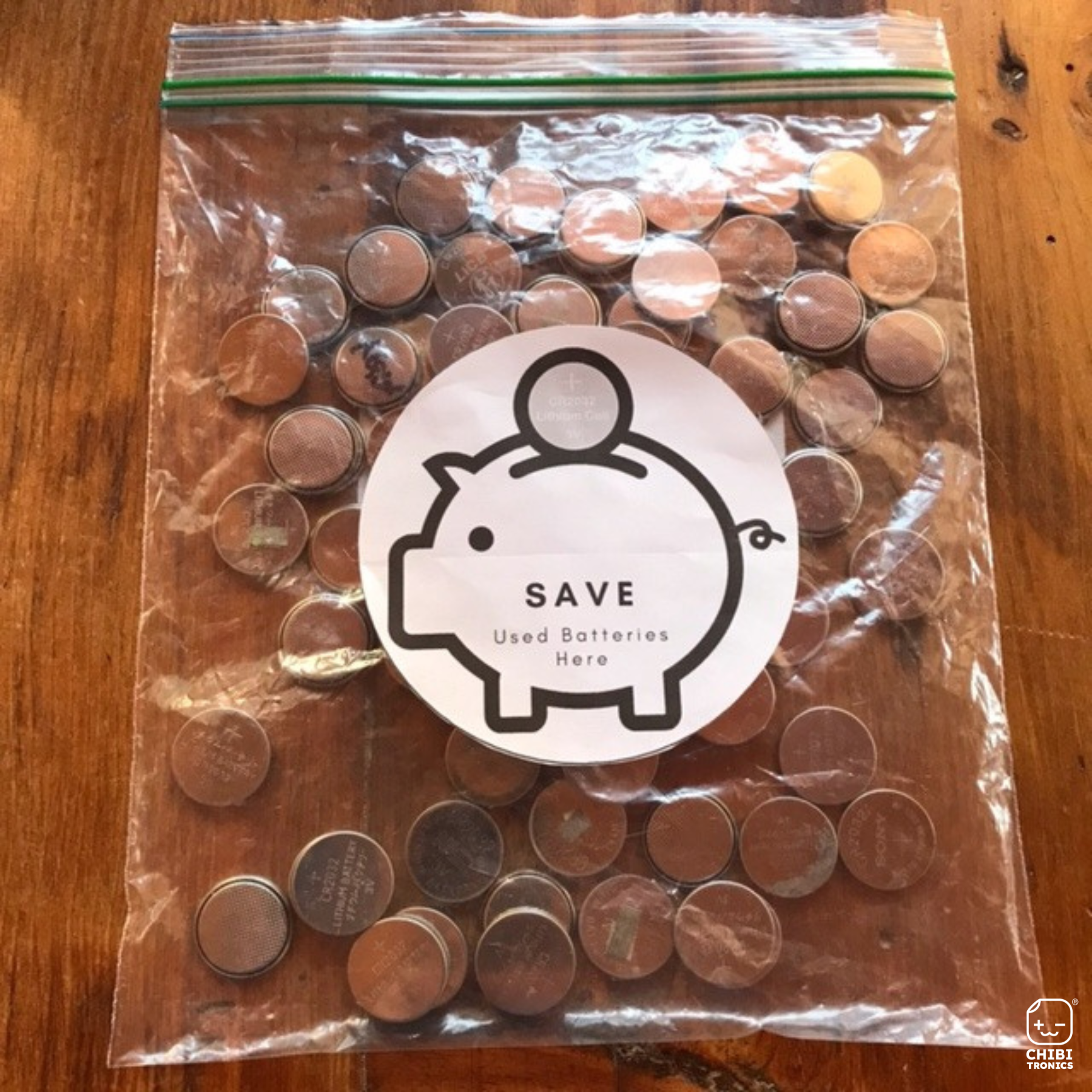
- Recycled Clamshell Box
An upcycled plastic clamshell box, popularly used to sell tomatoes, is another ideal choice to help store and save used batteries. It doesn’t need to be pretty. Small air holes in these containers can be useful in warm, humid climates, contributing to increased airflow.
To avoid mixing the chemistries of different battery types, which can result in sparking, Call2Recycle suggests adding a piece of packaging tape, duct tape, or electrical tape over the positive terminals of some types of batteries when mixing them together.
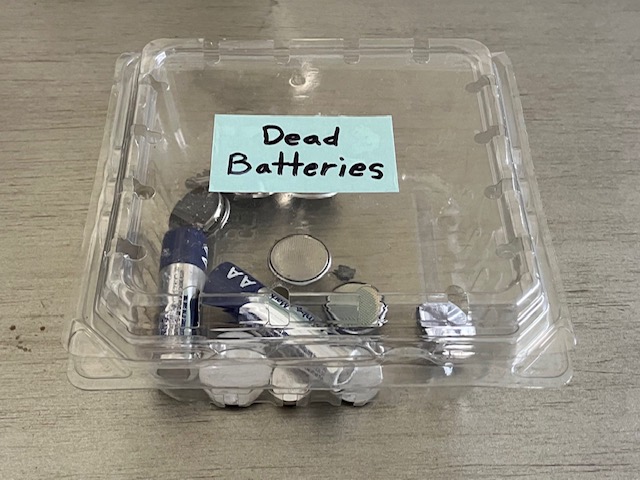
- Glass or Plastic Jar
Instead of using a jar to capture unsuspecting fireflies, why not devote one to storing and saving your spent batteries. Glass and plastic jars may be dolled up to make them more noticeable in a classroom or studio space, and a lid may be added for easy transport to a safe disposal site!
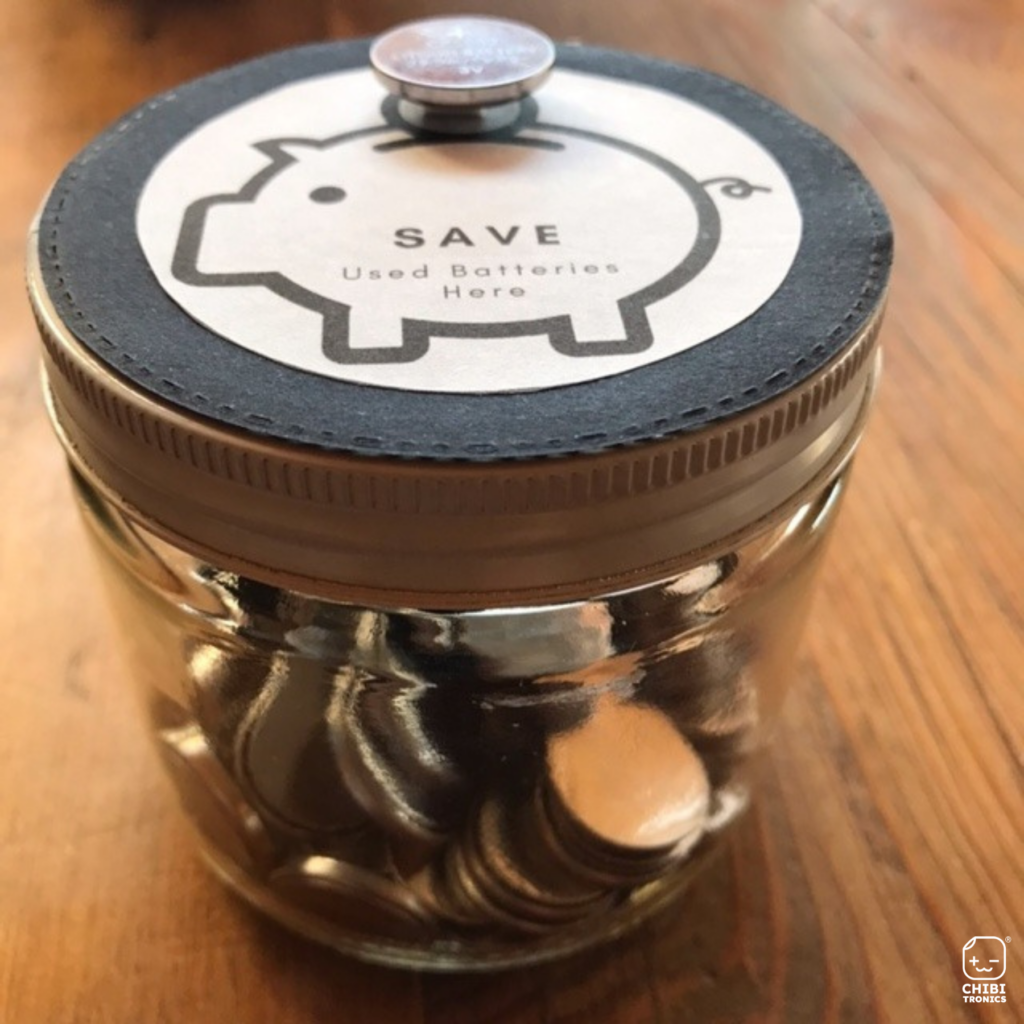

- Paper Bag or Cardboard Box
For temporary storage, a paper bag or cardboard box is an acceptable receptacle for used coin cell batteries. Paper bags and cardboard boxes are accessible, portable, and easily labeled with a marker.
However, since paper can be potentially flammable under some conditions, it is safest to apply a piece of packaging tape, duct tape, or electrical tape over the positive side of your dead batteries if you plan to store and save more than one type of battery in the bag or box.
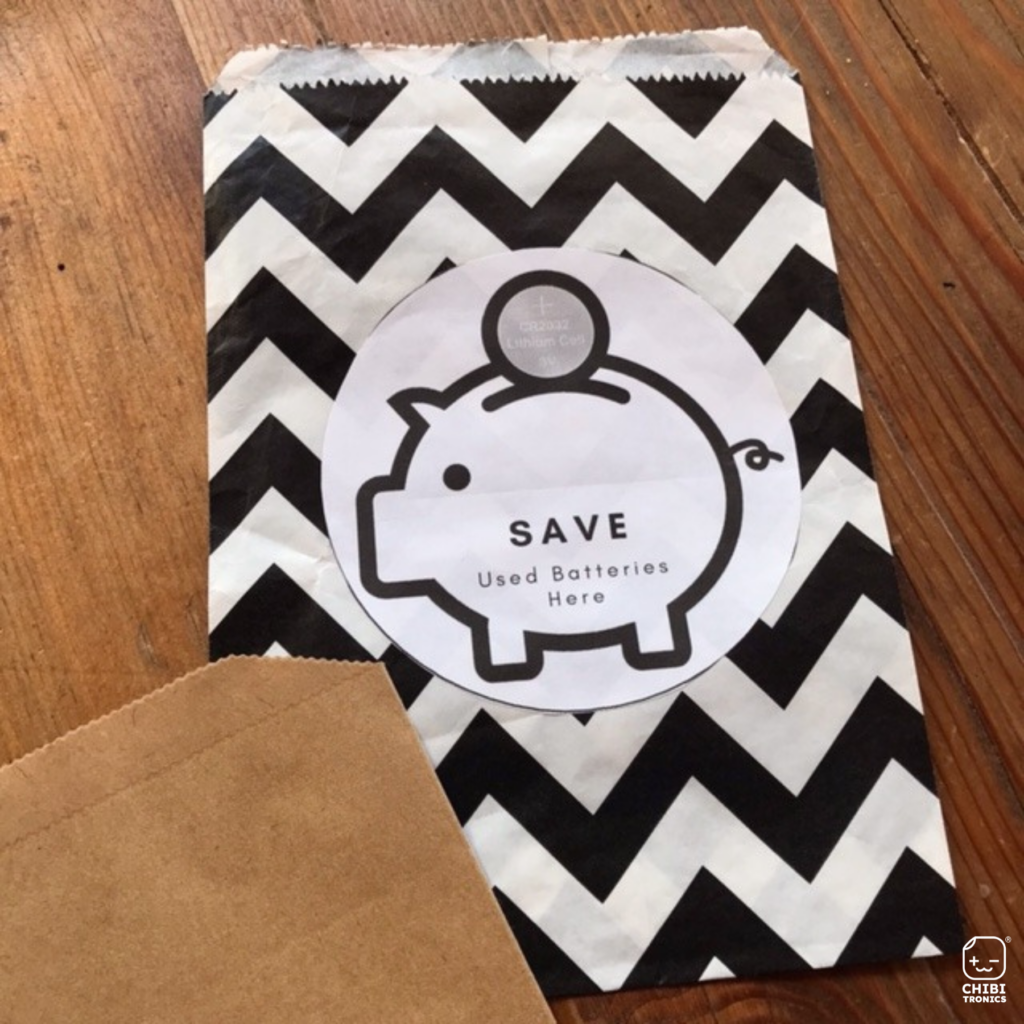
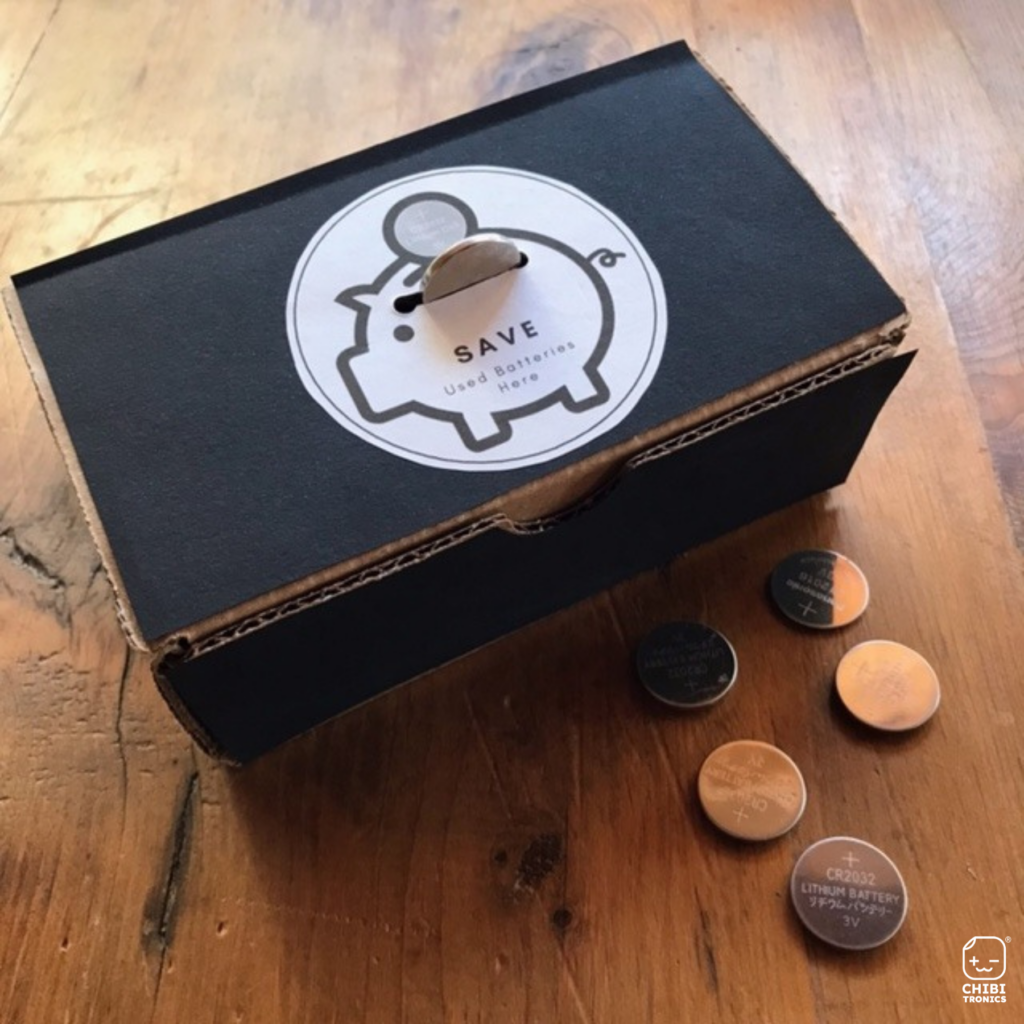
- Ceramic Container
Sustainability is classy. So, if you have refined tastes, why not consider a decorative ceramic box with a lid — one that really makes a statement, while being a more attractive way to store and save used batteries?

- 3D Printed Box
If you prefer a bolder, more modern look (and have access to a 3D printer), a 3D box with a prominent label built right into the design might be a an inspiring, high-profile way to invite groups to contribute their dead coin cell batteries, rather than tossing them into a trash bin. The plans for this one, Simple Box for Recycling Batteries, made by seagull08, have been shared on Thingaverse with a Creative Commons – Attribution License.
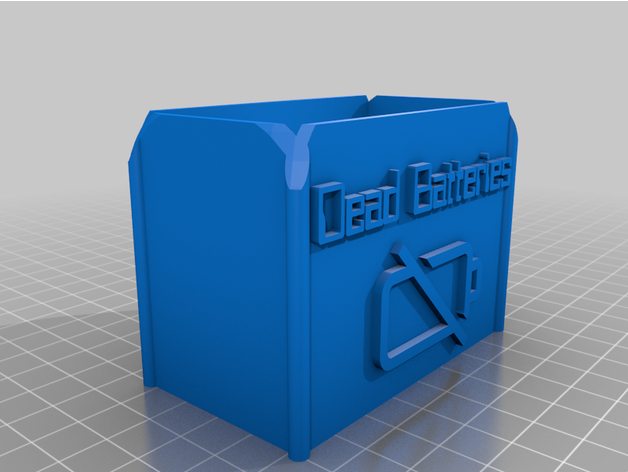
Tips for Safe Storage
No matter how you choose to store and save your dead batteries for future disposal, here are some added safety precautions to consider.
- Store used batteries out of the reach of small children.
- Store used batteries in a cool, dry area, away from heat, flammable materials, or areas of extreme moisture or humidity.
- Only store used batteries in your junk drawer after placing them in an insulated container (think plastic, glass, or wood); loose batteries should not be tossed into a junk drawer, where they might come in contact with staples, paperclips, or loose screws. This is because some batteries can be prone to sparking.
- Avoid the use of conductive storage containers, such as tin coffee or soup cans.
- If mixing up battery types or shipping used batteries to a collection point through the mail, Call2Recycle suggests that you apply clear packing tape, duct tape, or electrical tape to the positive side/ positive terminals of certain types of batteries, including coin cell batteries.
Call2Recycle encourages you to bag and tape all batteries because it is often difficult to identify specific chemistries. The U.S. DOT requires certain battery terminals be bagged or taped prior to transportation. This avoids possible sparking when the terminals come into contact.
- Primary (Alkaline, carbon zinc): greater than 12V
- Primary (Lithium, button, coin cell): all
- Rechargeable (Nickel Cadmium, Nickel Metal Hydride, Nickel Zinc): greater than 9V
- Rechargeable: (Lithium-Ion or SSLA/PB): all
In case you’re interested, this PDF of “Piggy Bank” pigs is free for you to download and may be turned into stickers or signs.
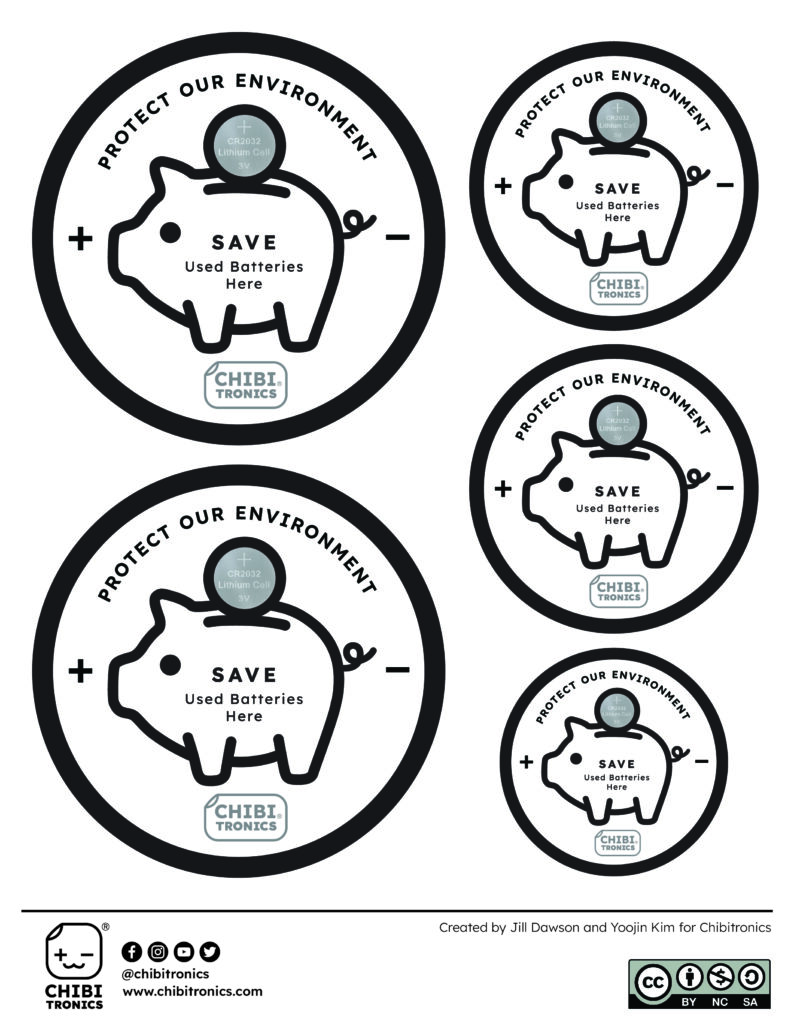
Show us how you store and save your dead batteries!
Have a battery collection method that works well for you? We would like to see the methods you have devised for saving and storing your dead coin cell batteries for future disposal. We’d be delighted if you’d share a picture and tag us on social media.
